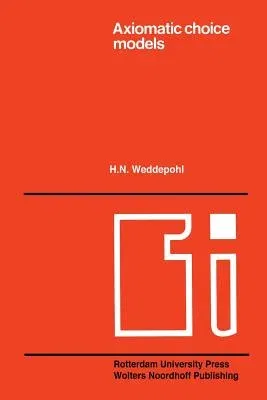Every day people frequently have to make a choice. For practical and
scientific reasons therefore it is interesting to know what choices they
make and how they arrive at them. An approach to this question can be
made via psychology. However, it is also possible to approach it on a
more formal basis. In this book Dr. Wedde- pohl describes the logical
structure of an individual's rational choice. It is this formal, logical
approach to the decision problem that makes the book interesting reading
matter for all those who are engaged in the study of individual choice.
The introduction apart this study may be divided into two parts. The
first part, consisting of chapters II and III, deals with choice theory
on a very abstract level. In chapter II some mathematical concepts are
presented and in chapter III two related choice models are treated, the
first one based on preferences, the second one on choice functions. The
second part consists of chapters IV, V and VI and covers consumer choice
theory. After the pre- sentation of the mathematical tools, two models
that are extensions of the models of chapter III are dealt with. In the
discussion of consumer choice theory the concept of duality plays an
important role and it is found that duality is closely related to the
notion of favourability introduced in chap- ter II I. Mr. Weddepohl's
study forms an introduction to a larger research project to develop the
theory of collective choice.


